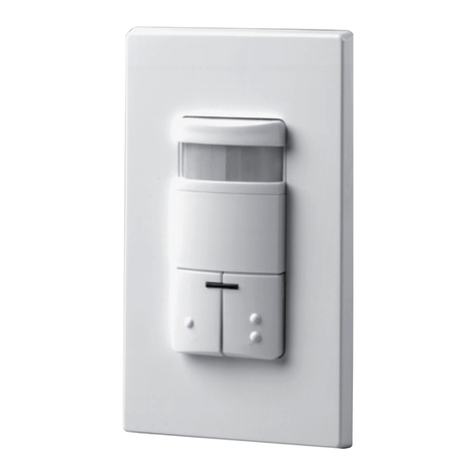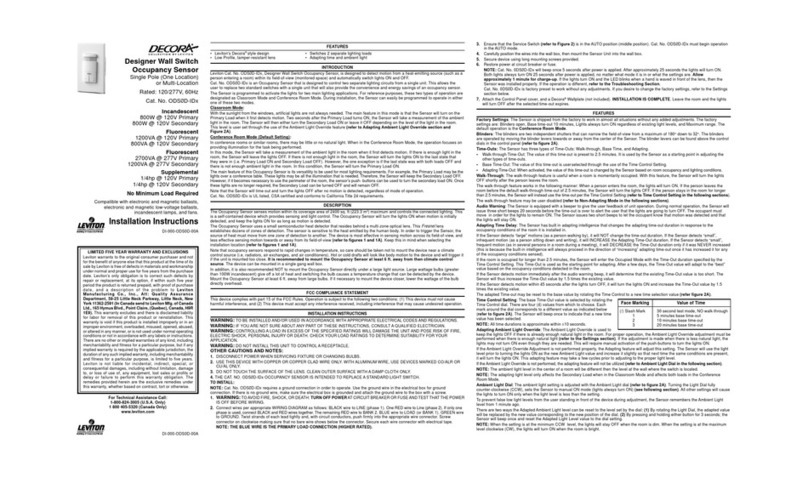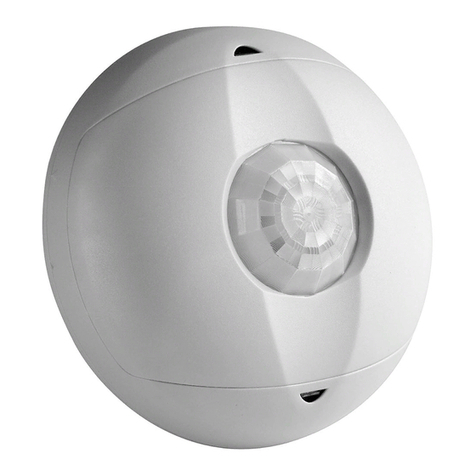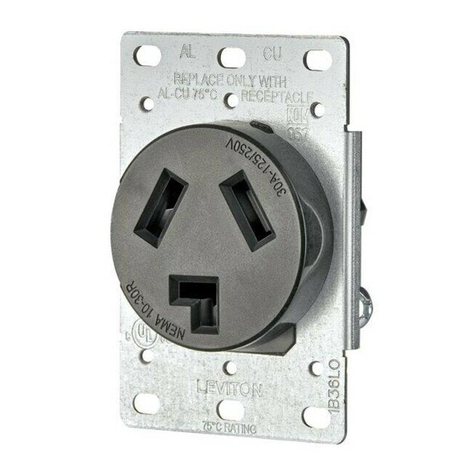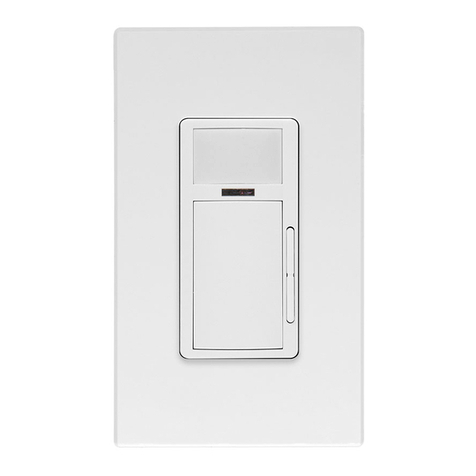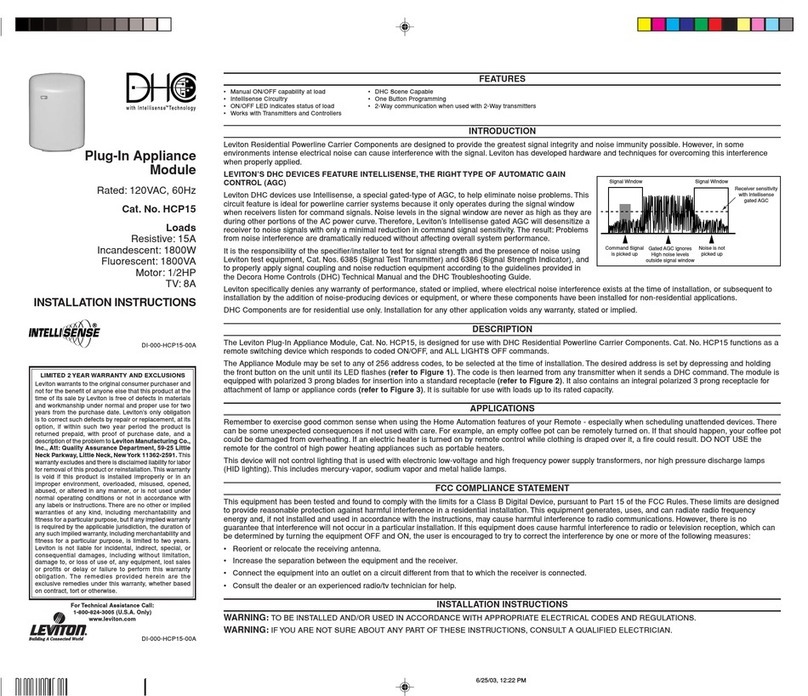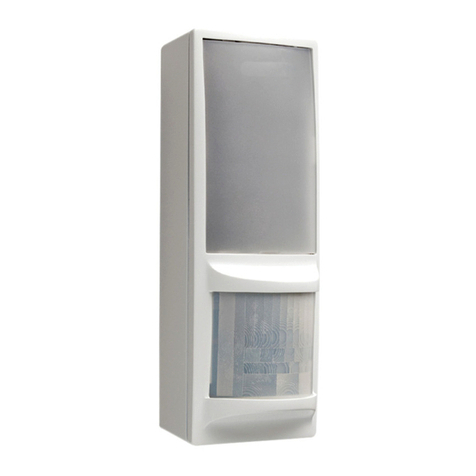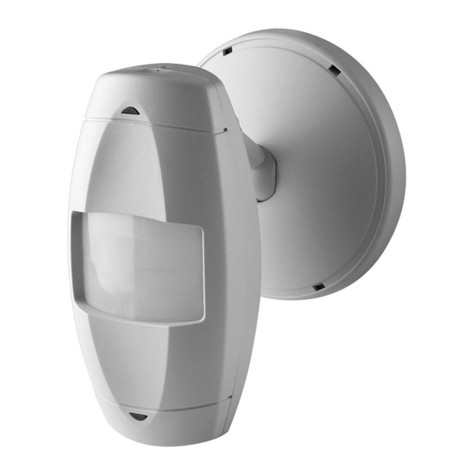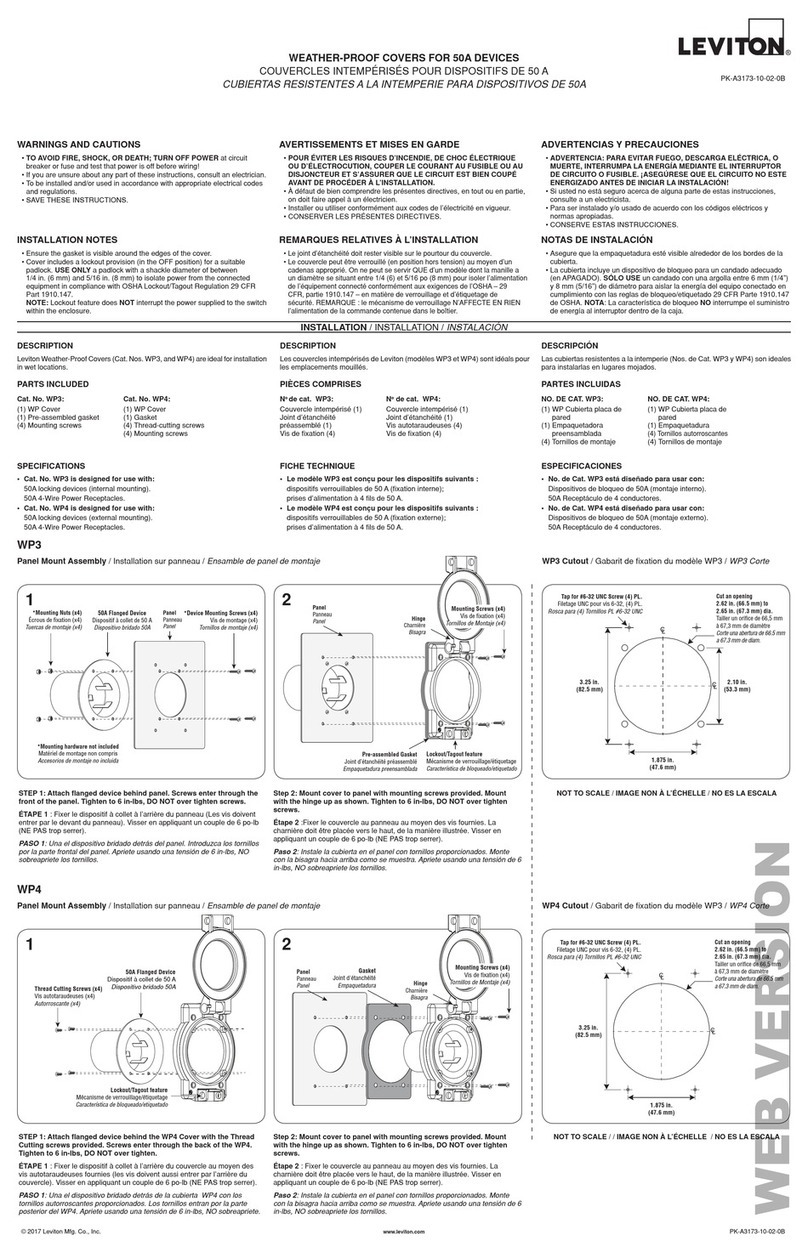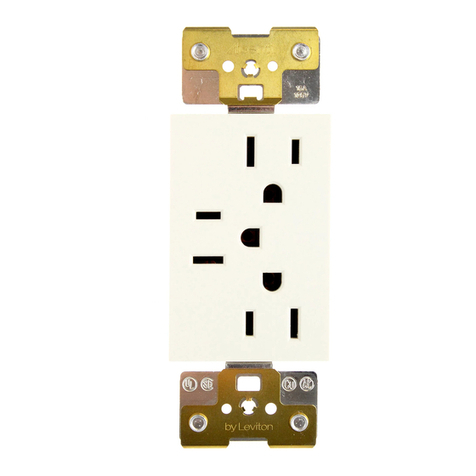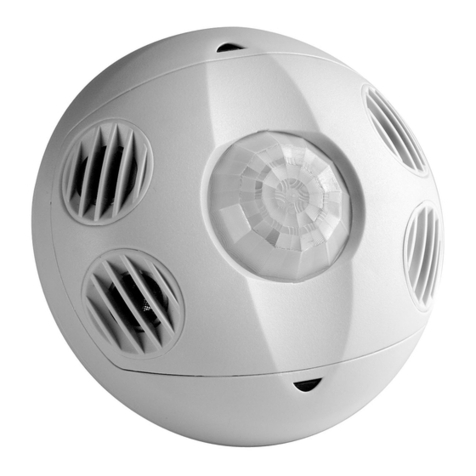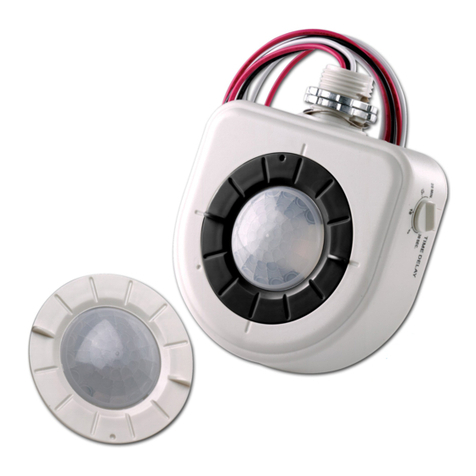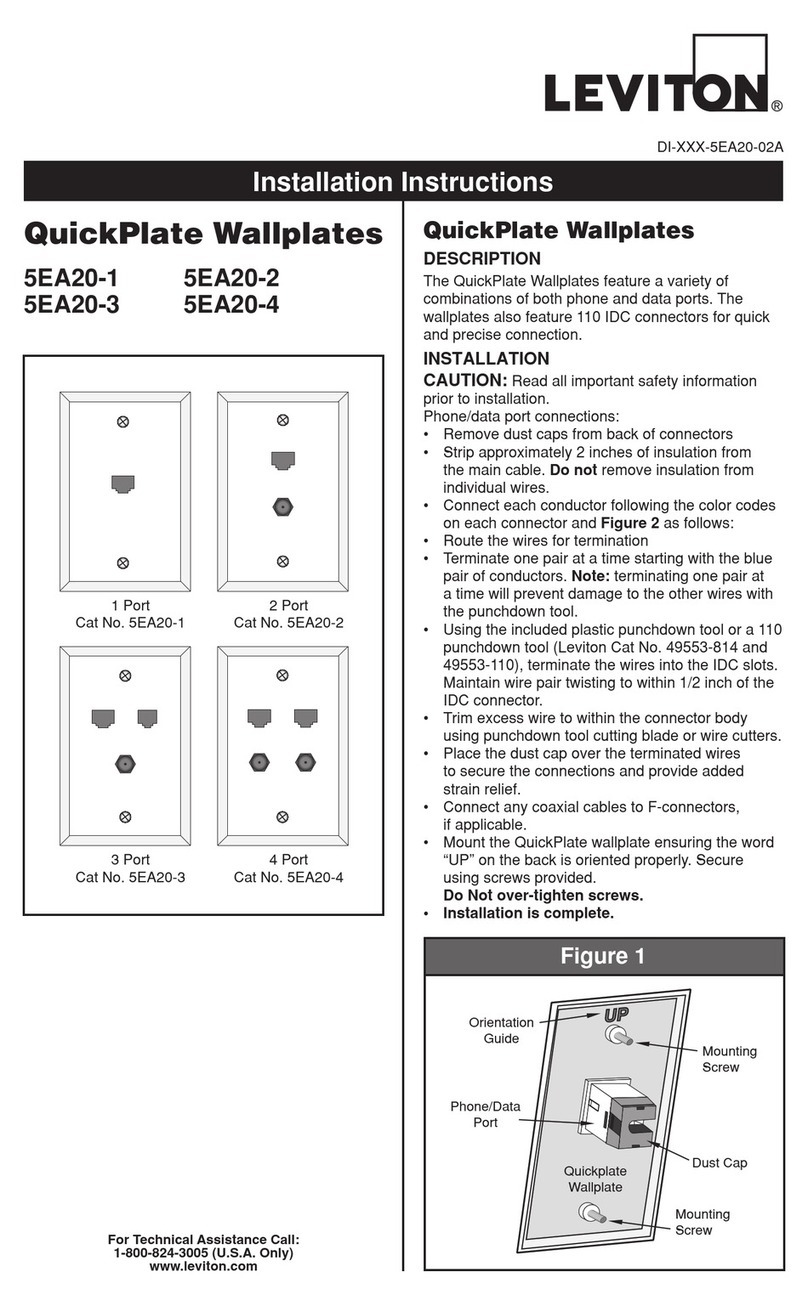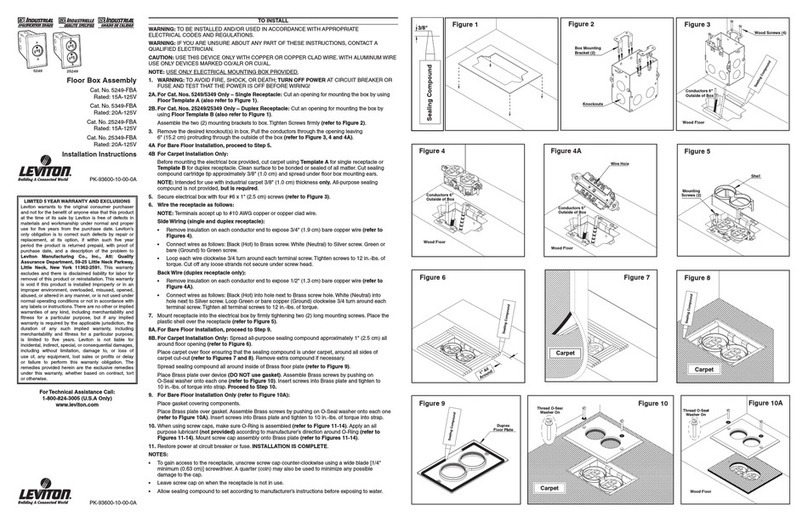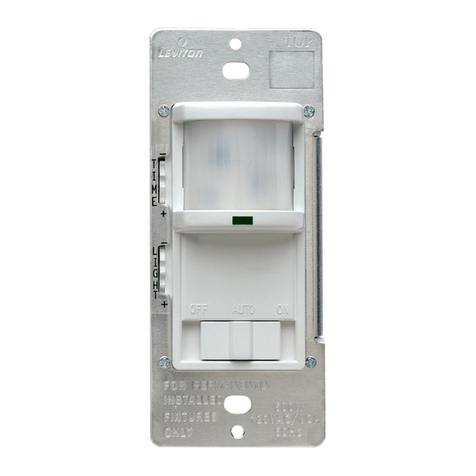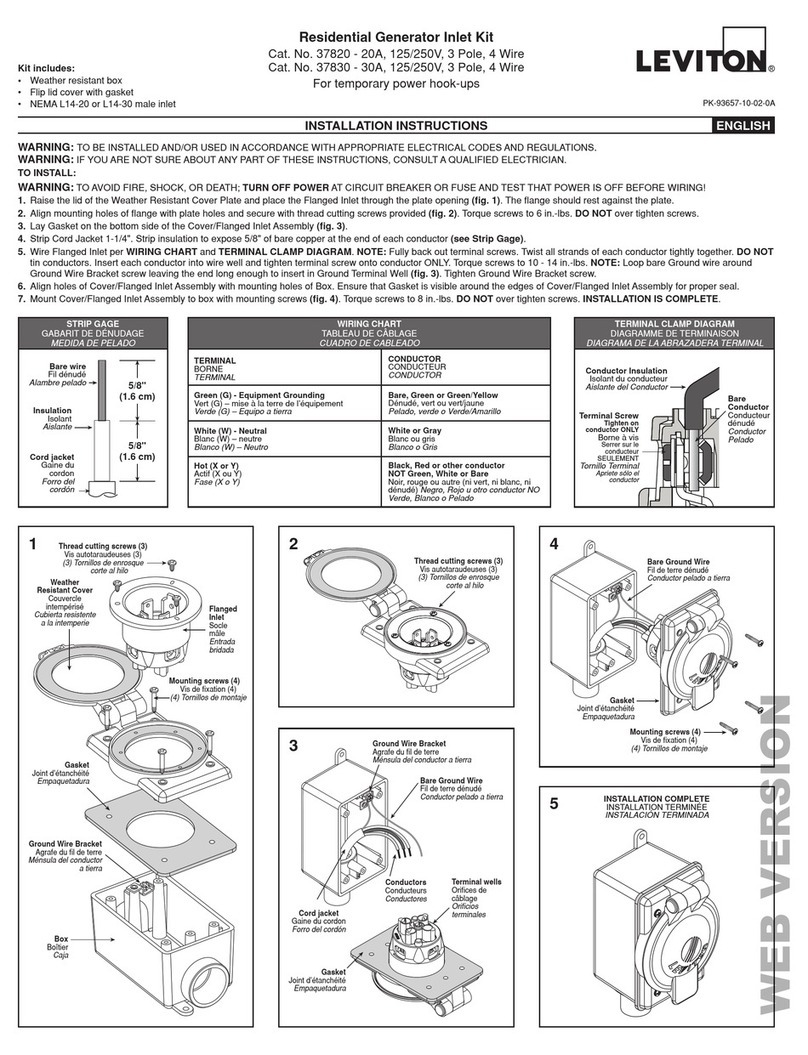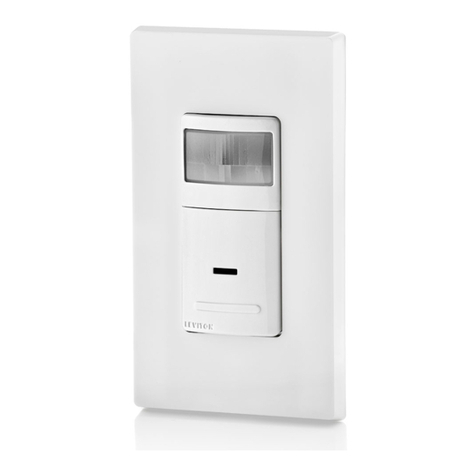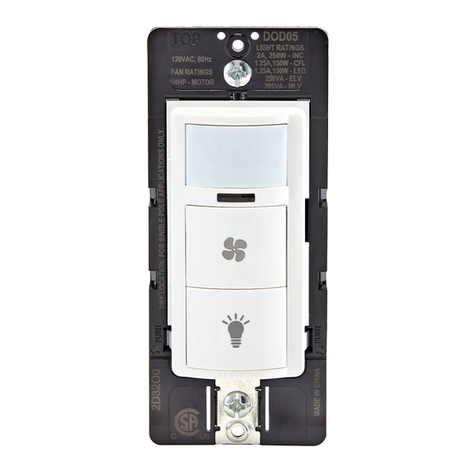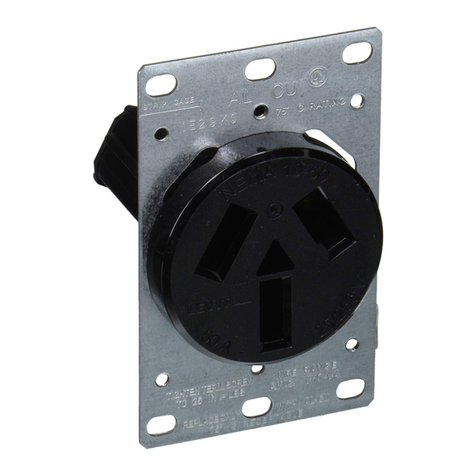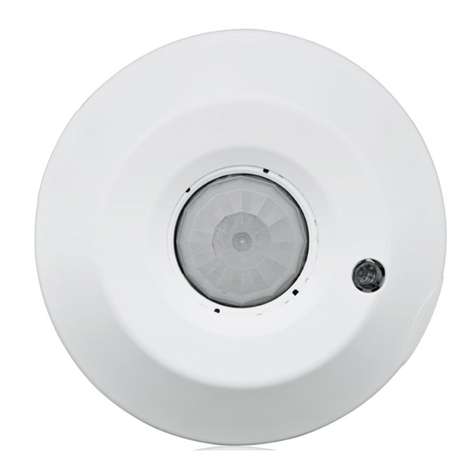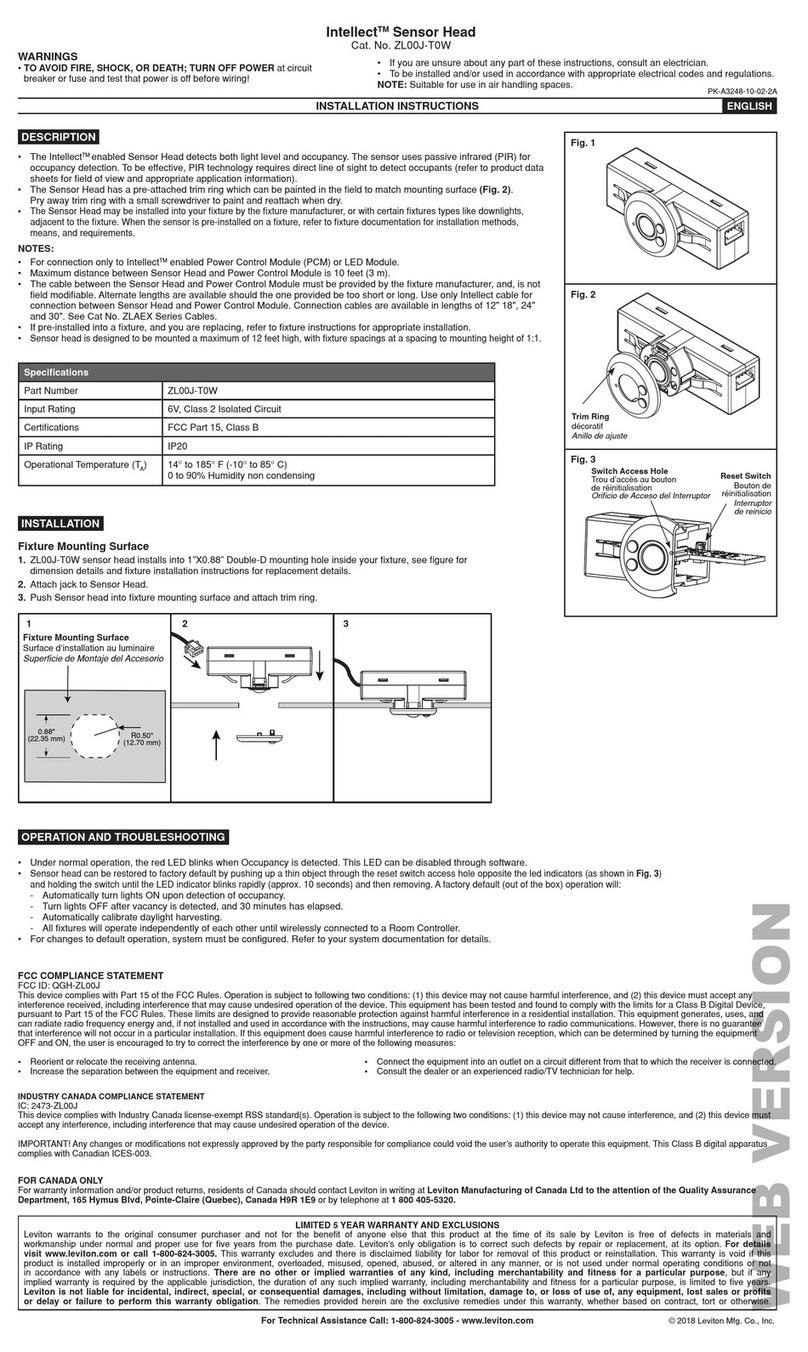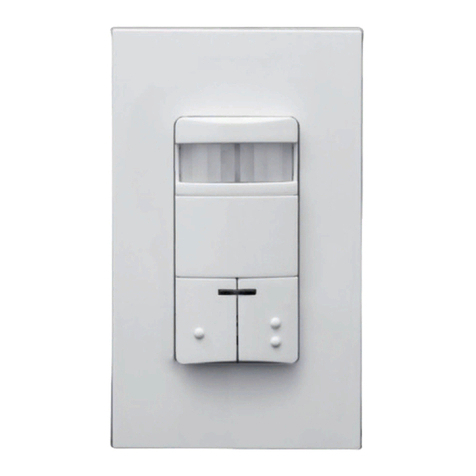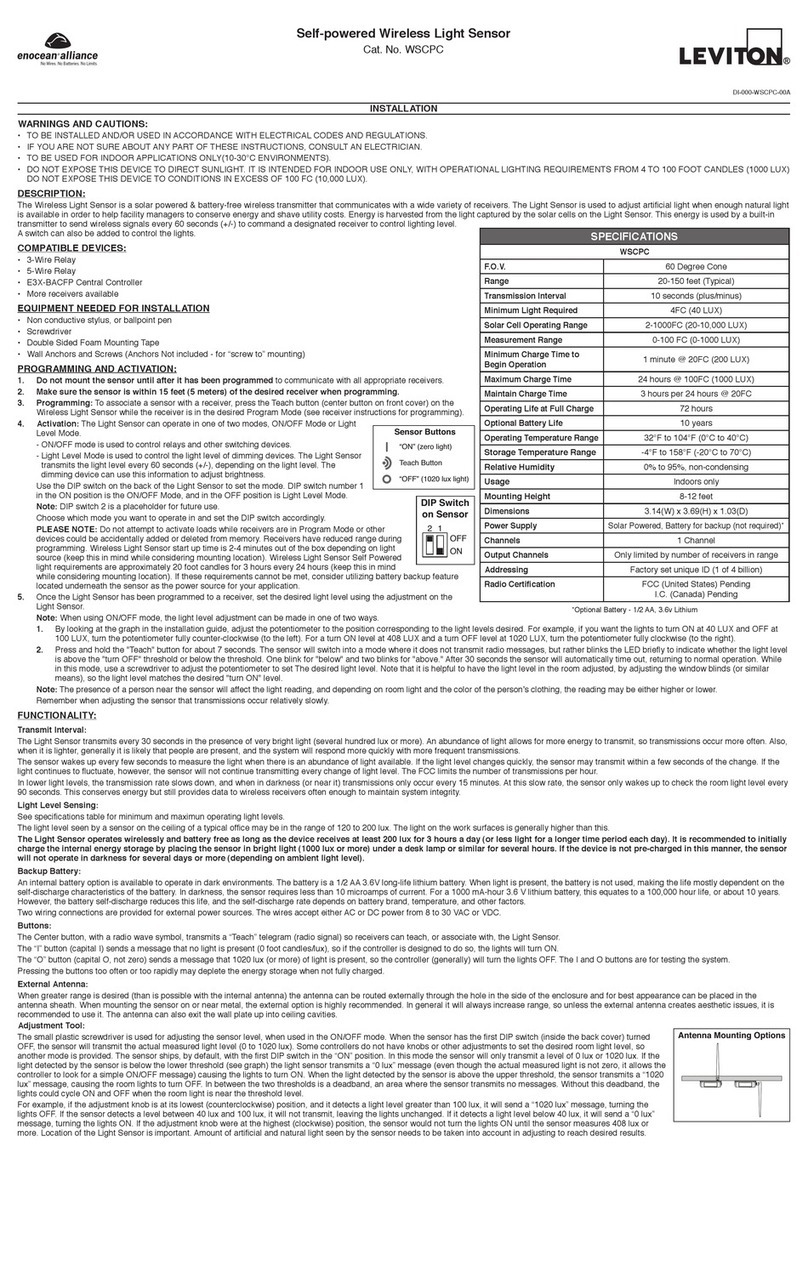1- #12 w/ 1 to 3 #14, #16 or #18
2- #12 w/ 1 or 2 #16 or #18
1- #14 w/ 1 to 4 #16 or #18
2- #14 w/ 1 to 3 #16 or #18
WIRE NUT / # OF COND.
COMBINATION CHART
For non-standard wiring applications, refer
to Wire Nut and Conductor Size Chart
• Pull off pre-cut insulation from sensor leads.
• Make sure that the ends of the wires from the wall box are straight
(cut if necessary).
• Remove insulation from each wire in the wall box as shown.
Preparing and connecting wires:
5/8"
(1.6 cm)
Strip Gage
(measure bare
wire here)
Cut
(if necessary)
Step 3
Tools needed to install your Sensor:
Slotted/Phillips Screwdriver Electrical Tape Pliers
Pencil Cutters Ruler
DESCRIPTION
Leviton's Designer Multi-Technology Wall Switch Occupancy
Sensor, Cat. No. OSSMT-MDx, is designed to detect motion using
the passive infrared (PIR) sensor from sources (such as a person
entering a room) within its field-of-view (monitored space) and
automatically switch lights ON. The ultrasonic (US) sensors work
with the PIR to keep the lights ON when occupied. The controlled
lights will remain ON until no motion is detected and the scheduled
time-delay has expired. The sensor adapts its time delay settings to
the occupancy patterns of a room.
Cat. No. OSSMT-MDx is UL listed, cUL listed and conforms to
California Title 24 requirements.
The Occupancy Sensor senses motion within its maximum
coverage area of 2400 sq. ft (223 m2) and controls the connected
lighting. This is a self-contained device that provides sensing and
light control. The Occupancy Sensor will turn the lights ON when
motion is detected and keep the lights ON for as long as motion is
detected.
The PIR Occupancy Sensor uses a small semiconductor heat
detector that resides behind a multi-zone optical lens. This Fresnel
lens establishes dozens of zones of detection. The Sensor is
sensitive to the heat emitted by the human body. In order to initially
trigger the Sensor, the source of heat must move from one zone
of detection to another. The device is most effective in sensing
motion across its field-of-view and it is less effective sensing
motion towards or away from its field-of-view). Keep this in mind
when selecting the installation location (refer to Field-of-View
diagrams).
The US Occupancy Sensor uses a non-audible, high frequency
(40kHz) to sense Doppler shifts caused by motion in the space. The
US is more sensitive to small motion and does not rely on line of
sight for detection. If both sensors have not detected any motion for
the set timeout period, the lights will be turned OFF.
Note that occupancy sensors respond to rapid changes in
temperature, so care should be taken not to mount the device
near a climate control source (i.e. radiators, air exchanges, and
air conditioners). Hot or cold drafts will look like body motion to
the device and will trigger it if the unit is mounted too close. It is
recommended to mount the Occupancy Sensor at least 6
ft. away from the climate control source. The device can be
mounted in a single gang wall box.
In addition, it is also recommended NOT to mount the Occupancy
Sensor directly under a large light source. Large wattage bulbs
(greater than 100W incandescent) give off a lot of heat and
switching the bulb causes a temperature change that can be
detected by the device.
Mount the Occupancy Sensor at least 6 ft. away from large bulbs. If
it is necessary to mount the device closer, lower the wattage of the
bulb directly overhead.
NOTE: To avoid PERMANENT DAMAGE to the unit, be careful
NOT TO OVERTURN the control knobs or levers when setting
the Sensor. The controls can be accessed by removing the
wallplate (if applicable) and control panel cover (refer to Control
Panel Diagram). Use a small straight blade screwdriver to adjust
knobs and blinder levers.
NOTE: DO NOT press in on blinder levers or use excessive force
(refer to Control Panel Diagram).
• Attach the Control Panel cover when the desired settings are
complete.
If lights do not turn ON, refer to the TROUBLESHOOTING
section.
FEATURES:
NOTE: To access control settings, remove the control panel
cover. If necessary, remove the warning label that covers the
adjustment dials (refer to Control Panel Diagram).
Factory Settings: The sensor is shipped from the factory to work
in almost all situations, without any added adjustments. The factory
settings are: Blinders open, Adapting Time-Out starting with 30
minute Base Time-Out, Lights always turn ON regardless of existing
light levels, and Medium range.
Blinders: The blinders are two independent shutters that can
narrow the field-of-view from a maximum of 180° down to 32°. The
blinders are operated by moving the blinder levers towards or away
from the center of the Sensor. The blinder levers can be found
above the control dials in the control panel (refer to Control Panel
Diagram).
Time-Outs: The Sensor has three types of Time-Outs: Walk-
through, Fixed, and Adapting.
• Walk-through Time-Out: The value of this Time-Out is preset to
2.5 minutes.
• Fixed Time-Out: The value of this Time-Out is user selected
through the use of the Time Control Setting.
• Adapting Time-Out: When activated, the value of this
Time-Out (30 minutes) is changed by the Sensor based
on room occupancy and lighting conditions.
Walk-Through: The walk-through feature is useful when a room
is momentarily occupied. With this feature, the Sensor will turn the
lights OFF shortly after the person leaves the room.
The walk-through feature works in the following manner: When a
person enters the room, the lights will turn ON. If the person leaves
the room before the walk-through time-out of 2.5 minutes, the
Sensor will turn the lights OFF. If the person stays in the room for
longer than 2.5 minutes, the Sensor will instead use the time-out
per the Time Control setting (refer to Time Control setting in the
following sections).
Adapting Time Delay: The Sensor has built in adapting intelligence
that changes the Adapting Time-Out duration in response to the
occupancy conditions of the room it is installed in.
If the Sensor detects “large” motions (as in a person walking by),
it will NOT change the Time-Out duration. If the Sensor detects
“small”, infrequent motion (as in a person sitting down and writing)
it will INCREASE the Adapting Time-Out duration. If the Sensor
detects “small”, frequent motion (as in several persons in a room
during a meeting), it will DECREASE the time-out duration only if
it was NEVER increased (this is because the built-in intelligence
will always proceed in the direction of “increasing” adapting Time-
Out once it has increased it for any of the occupancy conditions
sensed).
If the room is occupied for longer than 2.5 minutes, the Sensor will
enter the Occupied Mode with the time-out duration specified by
the Time Control setting. This time-out is used as the starting point
for adapting. After seven days, the Time-Out value will adapt to the
“best” value based on the occupancy conditions detected in the
room.
Step 6 cont’d
WIRING SENSOR:
Connect wires per WIRING DIAGRAM as follows:
• Green or bare copper wire in wall box to Green lead.
• Line Hot wall box wire to Black lead.
• Load wall box wire to Blue lead.
• Line Neutral wall box wire to White lead.
NOTE: Allow 1 minute for warm-up after connected.
3-Way
1. Line or Load (See important*
instruction)
2. Neutral
3. Ground
4. First Traveler – note color
5. Second Traveler – note color
Single-Pole
1. Line (Hot)
2. Neutral
3. Ground
4. Load
Identifying your wiring application
(most common):
NOTE: If the wiring in the wall box does not resemble this
configuration, consult a qualified electrician.
IMPORTANT: For 3-Way applications, note that one of the screw
terminals from the old switch being removed will usually be a different
color (Black) or labeled Common. Tag that wire with electrical tape and
identify as the common (Line or Load) in both switch wall boxes.
Testing your Sensor prior to
completely mounting in wall box:
NOTE: Sensor 1 must be installed in a wall box that has both a LINE
Hot and a Neutral connection. Sensor 2 must be installed in a wall box
that has both a Load and a Neutral connection.
If you are unsure about any part of these instructions, consult a
qualified electrician.
WIRING SENSOR 1:
Connect wires per WIRING DIAGRAM as follows:
• Green or bare copper wire in wall box to Sensor 1 Green lead.
• Line Hot (common) wall box wire identified (tagged) when removing
old switch and First Traveler from Sensor 2 to Sensor 1 Black lead.
• Second Traveler wall box wire from Sensor 2 to Sensor 1 Blue lead.
• Line Neutral wall box wire to Sensor 1 White lead.
WIRING SENSOR 2:
Connect wires per WIRING DIAGRAM as follows:
• Green or bare copper wire in wall box to Sensor 2 Green lead.
• Load wall box wire identified (tagged) when removing old switch
and Second Traveler from Sensor 1 to Sensor 2 Blue lead.
• First Traveler Line Hot from Sensor 1 to Sensor 2 Black lead.
• Second Traveler wall box wire from Sensor 2 to Sensor 1 Blue lead.
• Line Neutral wall box wire to Sensor 1 White lead.
NOTE: Allow 1 minute for warm-up after connected.
